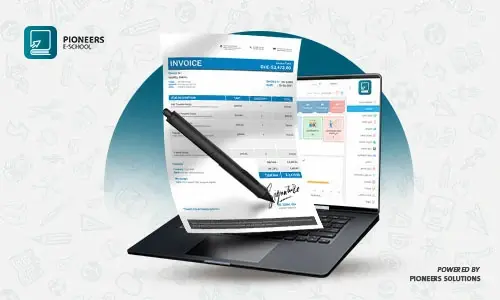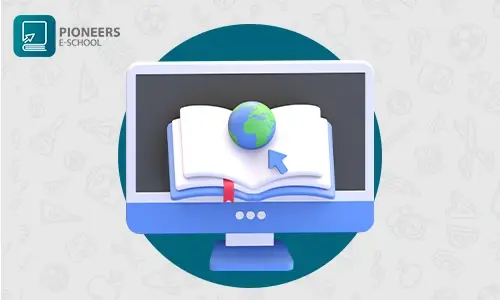Technology is a set of tools and means that help a person improve his life and facilitate his work. Among the areas of use of technology, education is one of the most important areas that affect the development and development of societies. Education is a process that aims to transfer knowledge, skills and values from one generation to another, and to develop the individual's abilities, creativity and interaction with his surroundings.
In our time, education faces many challenges and problems, such as: population growth, cultural diversity, economic, social and political changes, the need for lifelong learning, global competition, and scientific and technical development. Therefore, education needs to be innovated, developed and leveraged by technology to keep pace with these challenges and respond to the needs of learners and society.
In this article, we will learn about the concept of educational technology, its importance, ways of use, benefits, impact, and recent trends in it.
The concept of educational technology
Educational technology is an interdisciplinary field that integrates educational sciences, computer science, communication sciences, and other fields related to education and technology. It is concerned with the design, development, evaluation and application of technological tools, means, strategies and systems that facilitate and enhance learning, teaching, assessment, management and research processes at different levels and educational environments.
Examples of technological tools, means and systems used in education include: computer, Internet, smartphone, tablet, smart board, presentations, multimedia, educational games, virtual and augmented reality, e-learning, blended, mobile, interactive, collaborative and customized, data-driven learning, analytics, artificial intelligence, deep learning, and others.
The importance of educational technology
Educational technology plays an important role in improving the quality, importance and efficiency of education, and achieving its desired goals and outcomes. Educational technology is important include:
- Provide learning opportunities for all, achieve equality, justice and inclusiveness in education, facilitate access to educational resources, information and services, and transcend temporal, spatial, geographical, economic, cultural, linguistic, physical, psychological and social barriers.
- Develops learners' twenty-first century skills, such as: critical, creative, analytical and systematic thinking, problem solving and decision-making, communication, cooperation and negotiation, initiative, leadership and leadership, flexibility, adaptation and continuous learning, responsibility, ethics and citizenship, digital, information and media literacy.
- It supports the diversification, revitalization and motivation of the educational process, taking into account individual differences and active, participatory, meaningful learning based on needs, interests, experiences, levels, styles, possibilities, expectations and goals.
- It increases the effectiveness and efficiency of the educational process, and improves the quality, quantity, speed, accuracy, organization, documentation, evaluation, follow-up, analysis, development, dissemination, transfer, exchange, storage, retrieval and use of educational information, contents, activities and services.
- It helps to develop, update and improve curricula, courses, materials, means, strategies, methods and tools.
- Educational systems, which contribute to the achievement of integration, adaptation, responsiveness, transformation, innovation and excellence in education.
Ways to use technology in education
Technology can be used in education in different ways, depending on the goals, levels, resources and conditions available. Among the most important of these methods are the following:
- The use of technology as an educational tool, which is the traditional method in which technology is used to provide information, contents, instructions, examples, explanations, explanations, reinforcements and feedback to learners, in a directed, organized, sequential and sequential manner, according to a specific curriculum and course. Examples include: Using presentations, multimedia, videos, audio, images, graphics, animations, graphics, tables, maps, charts, icons, icons, text, e-books, magazines, newspapers and websites Blogs, forums, encyclopedias, dictionaries, libraries, stores, repositories, electronic archives, and others.
- The use of technology as a learning tool, which is the modern method in which technology is used to enable learners to search, explore, investigate, discover, experiment, apply, analyze, evaluate, express, produce, create, communicate, collaborate, interact, share, exchange and learn through technology, in a self-paced, independent, proactive, responsible, organized, planned, balanced, diversified, integrated, adaptive, responsive, transformed, innovative and distinct, according to the needs, interests, experiences, levels, methods, possibilities, expectations and goals of learners. Examples of these Method: Use of computer, Internet, smartphone, tablet, smart board, educational games, virtual and augmented reality, e-learning, blended, mobile, interactive, collaborative and customized, data-driven learning, analytics, artificial intelligence, deep learning, and others.
- The use of technology as a teaching method, which is the method in which technology is used to facilitate and enhance the role of the teacher in education, and to improve his performance, efficiency, effectiveness, quality, creativity, development, modernization, transformation and excellence. Examples of this method include: the use of computers, the Internet, smartphone, tablet, smart board, presentations, multimedia, videos, audio, images, graphics, animations, graphics, tables, maps, charts, symbols, icons, texts, e-books, magazines, newspapers, websites and blogs Forums, encyclopedias, dictionaries, libraries, stores, warehouses, electronic archives, programs, applications, services, systems, networks, platforms, portals, communities, forums, conferences, workshops, courses, seminars, seminars, lectures, presentations, exhibitions, competitions, awards, certificates, accreditations, licenses, documents, reports, statistics, indicators, standards, standards, curricula, courses, materials, means, strategies, methods, tools, models, questions, tests, evaluations and feedback Recommendations, suggestions, observations, comments, directives, guidance, support, assistance, encouragement, motivation, appreciation, recognition, appreciation, excellence, and others.
Benefits of Educational Technology
The benefits of educational technology are:
- Improving the quality, efficiency and effectiveness of education, achieving its desired goals and outputs, and promoting innovation, excellence and competitiveness in education.
- Provide learning opportunities for all, achieve equality, justice and inclusiveness in education, facilitate access to educational resources, information and services, and transcend temporal, spatial, geographical, economic, cultural, linguistic, physical, psychological and social barriers.
- It develops learners' twenty-first century skills, improves their abilities, talents, creativity and interaction with the environment, and expands their horizons, knowledge, culture and experiences.
- It supports the diversification, revitalization and motivation of the educational process, taking into account individual differences and active, participatory, meaningful learning based on needs, interests, experiences, levels, styles, possibilities, expectations and goals.
- It increases the effectiveness and efficiency of the educational process, and improves the quality, quantity, speed, accuracy, organization, documentation, evaluation, follow-up, analysis, development, dissemination, transfer, exchange, storage, retrieval and use of educational information, contents, activities and services.
- It helps to develop, update and improve curricula, courses, materials, means, strategies, methods, tools and educational systems, and enables continuous learning, digital transformation and lifelong learning.
Read about:
10 classroom management skills every teacher should know
Recent trends in educational technology
Educational technology today is witnessing many modern, innovative and advanced trends, the most important of which are the following:
- E-learning: It is a type of learning that takes place online, and includes many activities, services, resources, tools and technologies that facilitate and enhance the processes of learning, teaching and student assessment, and allow learners to access educational content at any time and from anywhere, and allow teachers to save time, effort and costs, and improve the quality of education, training and continuous learning.
- Blended learning: It is a type of learning that combines face-to-face learning and e-learning, in which students and teachers use multimedia and various technologies to achieve learning and teaching goals, save time, effort and costs, and improve the quality of education, training and continuous learning.
- Performance-based learning: It is a type of learning that focuses on the actual performance of students and learners, in which students and teachers use multimedia and various technologies to achieve learning and teaching goals, save time, effort and costs, and improve the quality of education, training and continuous learning.
- Game-based learning: It is a type of learning that uses games and game applications to achieve learning and teaching goals, save time, effort and costs, and improve the quality of education, training and continuous learning.
- Data-driven learning: It is a type of learning that uses data, statistical analytics and artificial intelligence to analyze and interpret data and achieve learning and teaching goals, save time, effort and costs, and improve the quality of education, training and continuous learning.
After considering the benefits that technology can provide in education, it can be said that it is one of the most important tools that can be used to improve the quality and effectiveness of education, provide learning opportunities for all, develop the skills of the twenty-first century among learners, support the diversification, activation and motivation of the educational process, increase the effectiveness and efficiency of the educational process, help develop, update and improve curricula, courses, materials, means, strategies, methods, tools and educational systems, and allow continuous learning, digital transformation and lifelong learning..
Thank you for using a comprehensive guide on the use of technology in education. I hope the article has helped you. If you have any further questions, please feel free to contact us.
Related Articles
2025-02-02
Mohamed Abdelsalam
Comprehensive Guide to Understanding Pioneers E-School Features: From Scheduling to Performance Tracking
In a world where administrative and educational processes are becoming increasingly complex, the need for integrated management systems is more urgent...

2024-08-15
Mohamed Abdelsalam
Guide e-invoice in schools with the steps you need to know
Electronic invoice and receipt system It is considered An innovative central system that enables the Tax Authority to follow up on all commercial tran...

2024-07-03
Mohamed Abdelsalam
school principal's most essential daily and weekly tasks
The school principal is the backbone of the educational and administrative process within the educational institution. This job requires many tasks an...





